Carpet Fitting Cost
- The average cost of fitting a carpet is around £400
- The job will usually take half a day to complete
- A breakdown of pricing information including type, sizes and what cost factors to consider, as well as what's involved in such a task
- How long the job will take and a general overview of what types of jobs can be performed
- How to find and hire a carpet fitter
Trying to find out how much it costs to carpet a room?
Carpet fitting can cost anywhere between £250-£2,500 depending on various factors.
So, how can this guide help you?
In this guide, we breakdown carpet laying prices for different rooms and sizes so that any homeowner can calculate the cost of replacing a carpet before they get a quote.
Just need a quote from a carpet fitter?
We have a variety of local carpet fitters we can connect you with so you can get a carpet fitting quote that's quick and easy!
For all other carpet laying cost information, read on!

£400
Table of Contents
- How Much Does Carpet Fitting Cost?
- Supply Costs
- Additional Costs
- Labour Costs and Timescales
- Cost Factors of Laying Carpet
- What's Involved in Laying Carpet?
- Can I Lay Carpet Myself?
- Types of Carpet
- Carpet Material
- Alternatives to Carpet
- Carpet Underlay Prices
- Cost of Carpet Cleaning and Maintenance
- Cost of Removing Carpet
- Hiring Someone to Lay Carpet Checklist
- FAQs
- Sources
How Much Does Carpet Fitting Cost?
Calculating new carpet cost can be challenging.
When you first look at the price of carpet, it can seem very low.
However...
...There are lots of ways that the price can creep up.
So, what do you need to consider?
You need to remember to include the carpet fitter cost and the underlay. So, when you see a cheap carpet price, don't forget that it doesn't cover everything.
When you consider all the materials and the carpet fitting cost your price for a new carpet will start at around £210 for a basic quality carpet in a small room.
At the other end of the scale, you can pay up to £3,360 for a high-quality specialist carpet in a mid-sized room.
What can change the overall cost?
The type of carpet and the material it is made from can have a big impact on the cost. The effect of the underlay is small on the cost but should not be skimped on as it will affect the feel and the life span of the carpet.
What's the most popular carpet?
The most popular carpets are twist polypropylene carpets. They're reasonably priced, quite durable and have a range of price points.
In this type of carpet, a mid-sized room would cost anything from as little as £250 up to as much as £1,760.

How long can I expect loose fibres to keep coming out of my carpet? Should it have stopped after a few weeks?
Laying Carpet Prices
There are a lot of variations that will affect the final cost of your carpet.
The following tables show the average cost of carpet, when labour, underlay and fittings are all included in the price:
Carpet Type Costs
For comparison purposes, these are prices of polypropylene carpet with a mid-range underlay for a mid-sized room:
| Type | Cost – Basic Quality | Cost – Mid Range Quality | Cost – High Quality |
|---|---|---|---|
| Axminster | n/a | n/a | £1,760–£3,360 |
| Wilton | n/a | n/a | £1,440-£3,040 |
| Twist | £250-£640 | £640-£800 | £800-£1,760 |
| Saxony | £415-£545 | £545-£800 | £800-£1,120 |
| Velvet | £740-£860 | £860-£1,050 | £1,050-£1,440 |
| Frieze and Shag | £740-£860 | £860-£1,050 | £1,050-£1,440 |
| Berber | £320-£640 | £640-£800 | £800-£1,760 |
| Level Loop | £320-£640 | £640-£800 | £800-£1,760 |
| Multi-Level Loop | £420-£640 | £640-£960 | £960-£1,600 |
| Flat Weave | £960-£1,280 | £1,280-£1,600 | £1,600–£2,080 |
| Cut and Loop Combination | £740-£860 | £860–£1,280 | £1,280-£1,760 |
Carpet Material Costs
These are prices of twist carpet with a mid-range underlay for a mid-sized room:
| Type | Cost – Basic Quality | Cost – Mid Range Quality | Cost – High Quality |
|---|---|---|---|
| Polypropylene (Olefin) | £250-£640 | £640-£800 | £800-£1,760 |
| Polyester (PET) | £480-£800 | £800-£1,440 | £1,440-£1,760 |
| Wool | £640-£960 | £960-£1,440 | £1,440-£2,080 |
| Sisal | n/a | n/a | £1,440-£1,760 |
| Nylon (Polyamide) | £480-£800 | £800-£1,440 | £1,440-£1,760 |
Room Size Costs
Again, these are prices of polypropylene twist carpet with a mid-range underlay:
| Type | Cost – Basic Quality | Cost – Mid Range Quality | Cost – High Quality |
|---|---|---|---|
| 4.5m x 5.5m | £210–£510 | £510-£635 | £635-£1,385 |
| 5m x 6m | £250-£640 | £640-£800 | £800-£1,760 |
| 6.5m x 8.5m | £410-£1,070 | £1,070-£1,345 | £1,345-£3,000 |
| 12 step flight of stairs | £136-£208 | £208–£240 | £240-£420 |
Quality and Type of Underlay
| Type | Cost Per M2 – Basic Quality | Cost Per M2 – Mid Range Quality | Cost Per M2 – High Quality |
|---|---|---|---|
| PU Foam | £850-£890 | £890-£920 | £920-£950 |
| Sponge Rubber | £920-£950 | £950-£1,015 | £1,015-£1,050 |
| Crumb Rubber | £890-£920 | £920-£950 | n/a |
| Felt | £840-£855 | £850-£890 | n/a |
| Combination | £920-£950 | £950-£980 | n/a |
Supply Costs
When you are looking to get a carpet, there are a lot of factors to consider that will affect the price.
The following table should help you get an idea of cost based on a range of factors:
Carpet Type
| Type | Cost Per M2 – Basic Quality | Cost Per M2 – Mid Range Quality | Cost Per M2 – High Quality |
|---|---|---|---|
| Axminster | n/a | n/a | £50 - £100 |
| Wilton | n/a | n/a | £40-£90 |
| Twist | £3-£15 | £15-£20 | £20-£50 |
| Saxony | £8-£12 | £12-£20 | £20-£30 |
| Velvet | £18-£22 | £22-£28 | £28-£40 |
| Frieze and Shag | £18-£22 | £22-£28 | £28-£40 |
| Berber | £5-£15 | £15-£20 | £20-£50 |
| Level Loop | £5-£15 | £15-£20 | £20-£50 |
| Multi-Level Loop | £8-£15 | £15-£25 | £25-£45 |
| Flat Weave | £25-£35 | £35-£45 | £45-£60 |
| Cut and Loop Combination | £18-£22 | £22-£35 | £35-£50 |
Carpet Material
| Type | Cost Per M2 – Basic Quality | Cost Per M2 – Mid Range Quality | Cost Per M2 – High Quality |
|---|---|---|---|
| Polypropylene (Olefin) | £3-£15 | £15-£20 | £20-£50 |
| Polyester (PET) | £10-£20 | £20-£40 | £40-£50 |
| Wool | £15-£25 | £25-£40 | £40-£60 |
| Sisal | n/a | n/a | £40-£50 |
| Nylon (Polyamide) | £10-£20 | £20-£40 | £40-£50 |
Room Size
| Room Size | Cost – Basic Quality | Cost – Mid Range Quality | Cost – High Quality |
|---|---|---|---|
| 4.5m x 5.5m | £75-£375 | £375-£500 | £500-£1,250 |
| 5m x 6m | £96-£480 | £480-£640 | £640-£1,600 |
| 6.5m x 8.5m | £165-£825 | £825-£1,100 | £1,100-£2,750 |
| 12 step flight of stairs | £20-£90 | £90-£120 | £120-£300 |
Underlay
| Type | Cost Per M2 – Basic Quality | Cost Per M2 – Mid Range Quality | Cost Per M2 – High Quality |
|---|---|---|---|
| PU Foam | £2-£3 | £3-£4 | £4-£5 |
| Sponge Rubber | £4-£5 | £5-£7 | £7-£8 |
| Crumb Rubber | £3-£4 | £4-£5 | n/a |
| Felt | £1.50-£2 | £2-£3 | n/a |
| Combination | £4-£5 | £5-£6 | n/a |
Extras
| Item | Cost |
|---|---|
| Gripper rods | £0.50 per meter |
| Carpet to Carpet Threshold Bar | £5-£6 |
| Carpet to Laminate Threshold Bar | £7-£8 |
Additional Costs
When you are getting carpets laid there some additional costs to consider, some of these can arise as part of the work.
There are als some jobs you might want to consider as part of getting your carpets laid.
What are some of the additional costs you can expect?
Moving Furniture
If you're not able to move all of the furniture out of the room, you may be able to ask the carpet fitter to do this.
They'll usually ask for around £20 to cover the extra work of moving the furniture.
Adjusting Doors
When a carpet is added to a room, it can affect the door shutting. Some carpet fitters can adjust for you, but others won't.
You may need to find a handyman or carpenter to help you. The cost to adjust the door is usually around £10-£15 per door.
Removing and Disposing of Old Carpet
If you already have carpet down, it needs to be taken up and disposed of before the work begins. Most carpet fitters will do this if you arrange it in advance.
You should expect to pay £1-£3 per m2
Disposing of Off-Cuts
Unless you make arrangements otherwise, you will be left with all the offcuts of underlay and carpet.
If you want the fitters to take them away, you should arrange this in advance and expect a fee of £20-£30.
Painting A Room
A good job to get done while the carpet is up is painting the room.
It's quicker and easier to do when there are no concerns about getting paint on the carpet.
To get a room painted usually costs about £400.
Plastering
Plastering is a messy job. If your plaster needs touching up, you should consider doing it before you lay your new carpet.
It costs around £200 to plaster an interior wall.
Underfloor Heating
If you intend to get underfloor heating, it is a good idea to get this fitted before you lay new carpet.
Taking carpet up and down can shorten its lifespan. It costs around £800 to fit underfloor heating.
Labour Costs and Timescales
What can the cost of labour depend on?
The cost of the labour will depend on where the carpet is being laid. For a simple rectangular room, you can expect to pay £60 - £80 depending on the size.
The job will usually take 2 -4 hours. If the room has a lot of alcoves or is an unusual shape, then the cost and the time will go up.
What about carpeting staircases?
Staircases are tricky and will take more time, which means they can cost more. The more turns in the staircase, the higher the cost will be. You can expect to pay £75 - £120. Fitting carpet to a staircase will usually take around ½ a day.
Let's talk timescales...
When it comes to fitting carpet, it can be hard to predict how long it will take, this will not affect the cost of the work.
Cost Factors of Laying Carpet
There are a lot of factors that can affect the final cost of laying carpet. Some are unavoidable others; you can make choices that will affect the final price.
Let's have a look at the following cost factors:
Size and Shape of Area
The larger the area in need of carpeting, the higher the cost will be.
However...
The shape of the room can also affect the amount of carpet you need. Carpet usually comes in rolls of 4m or 5m width. The way these can be laid in the room can cause you to need to buy more carpet.
If you are trying to reduce costs...
You may choose to have more joins in the carpet to make use of the excess. You can discuss this with your fitter before you buy the carpet.
Type of Carpet
They type of carpet you choose will have an impact on the final cost of carpet. The thicker pile options tend to be more expensive, as are mixed cut and loop piles.
Material of Carpet
The material is one of the factors that have the biggest effect on the cost of your carpet. Natural materials like wool and sisal are more expensive. Synthetic materials tend to be much cheaper.
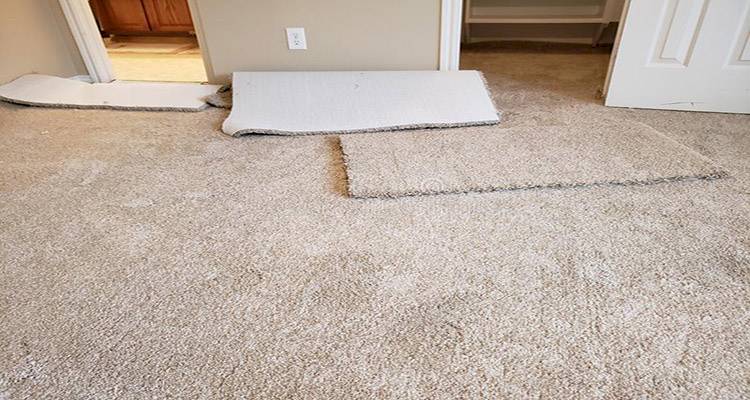
Location of Property
The location of your property can affect the cost of carpet fitting. You should expect to pay a premium price if you live in London or a very rural area.
Ease of Access
If you're unable to remove all of the furniture from the room, then it can be harder for your fitter to do their work. If they can't access the entire floor while they work, they may take longer or charge you a fee for moving the furniture around.
Underlay
If you are replacing old carpet, then you may be able to reuse the underlay if it is still in good condition.
This can save some money.
The quality of underlay you choose will affect the final price of your carpet. It'll also affect the feel and life span of the carpet. It is important to consider the carpet underlay cost when you are working out your total carpet price.
Carpeting Different Rooms Cost
The cost of carpet can very on what type of room you want carpeted too.
Here are the different types of rooms and their costs:
Bedroom Carpet Cost
For an averaged sized bedroom, it’ll cost between £180-£250 for a bedroom carpet, depending on what carpet you choose and how large the bedroom is.
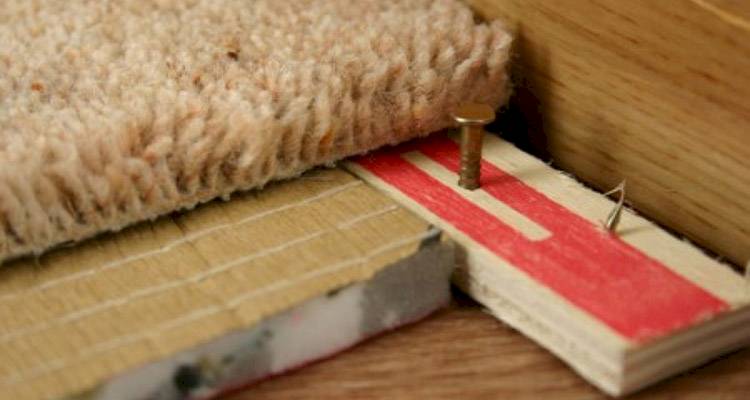
Stairs Carpet Cost
On average it should cost around £80-£120 to fit a carpet on an average set of straight stairs. This cost can increase if you have a different type of staircase, or if you need underlay.
Lounge Carpet Cost
A medium sized lounge carpet can cost between £200-£250. The price of a lounge carpet can vary due to the lounge floor size, type of carpet chosen, and if underlay and grippers are needed.
Kitchen Carpet Cost
A kitchen carpet needs to be hardwearing and stain proof and is usually priced between £3 per m2 to £17 per m2.
What's Involved in Laying Carpet?
There are several steps involved in fitting a carpet. The outline gives the steps for a simple rectangular room.
For more complicated shapes and stairs, the same principle is used the stretching steps just take a lot longer and are done with more care:
- Measuring - Before you begin, you will need to measure up the area for your carpet. You should measure the largest width and length of the room, including any alcoves.
Then add a minimum of 10cm to the measurements to ensure you have enough carpet. For a patterned carpet, you should add 20cm to give enough play to align the pattern with the room. - Preparation - The floor surface needs to be prepared before the carpet can be laid. This may involve taking up the old flooring. Any screws, holes or defects need to be addressed before the carpet can be laid. The floor needs to be flat and clean before you begin. Ideally, remove all of the furniture, so it is easier to lay the carpet.
- Fit Grippers - The grippers need to be fitted around the edge of the room. The angled side should face the skirting board. Position the gripper, so there is a gap of 7-8 mm between the angled edge of the gripper and the skirting board. Then hammer the fixing nails in to fix the gripper.
- Underlay - Roll out the underlay and put it up against the gripper bar. It can be fixed in place with staples or adhesive. Adjacent pieces of underlay are usually joined with gaffer tape. The offcuts can be used to fill small gaps for efficient coverage and reduce wastage.
- Cut Carpet - Start by positioning the carpet in the room. You need to make sure that the carpet is placed so that there is enough carpet to cover the whole area. Flatten out the carpet starting from the middle, so that any bumps and ruffles are moved to the edges.
Work the carpet into the corners, then made a vertical cut at the corner to make it easier to work the carpet into position. The fold the carpet over and cut off the excess carpet, leaving a 100mm excess. - Stretch the Carpet - Starting in the corner opposite the doorway stretch the carpet to the edge of the room and onto the gripper for about 1m in each direction. Then from this corner walk along the longest wall to the next corner. Stretch the carpet to this corner and hook it to the gripper.
The attach the longest side of the carpet to the gripper. Next do the same with the shorter side, again starting from the first corner. After this repeat for the other long wall and finally the last short wall. If there are any ripples in the carpet, then it can be unhooked and adjusted. - Trimming the Carpet - To trim the carpet to size, fold it back and cut on the underside. It should be cut about 8mm back from the skirting board, leaving a small excess. This small excess is tucked into the gap between the skirting board and the gripper to give a neat finish.
- Doorway - The last step is to cut the carpet in the doorway. It should be cut around the architrave on the door and at a length so that it reaches the midpoint of the threshold bar. They type of bar will depend on the flooring in the other room. Once cut the carpet is tucked into the threshold bar.
Can I Lay Carpet Myself?
Laying a carpet is a job that you can DIY.
It is fairly easy to lay carpet in a simple square room. Once the room shape becomes more complicated, it can be a good idea to hire a professional.
Can you carpet stairs DIY?
Stairs are very tricky, and it can be easy to make a mistake that can be very costly and hard to fix. So, for these jobs, it's best to leave it to a professional.
Types of Carpet
There are a lot of choices to make when it comes to the type of carpet you choose. This is before you even get to the material and colour. When you are deciding between types of carpet, you are usually talking about the pile.
So, what does that mean?
This is the way that the fibres have been attached to the backing and how they have been treated. The pile largely determines how the carpet will feel underfoot and how it will wear.
The two main methods of attaching the fibres to the backing are either using a woven or tufted method:
Woven Carpet Costs
These carpets are the most expensive option.
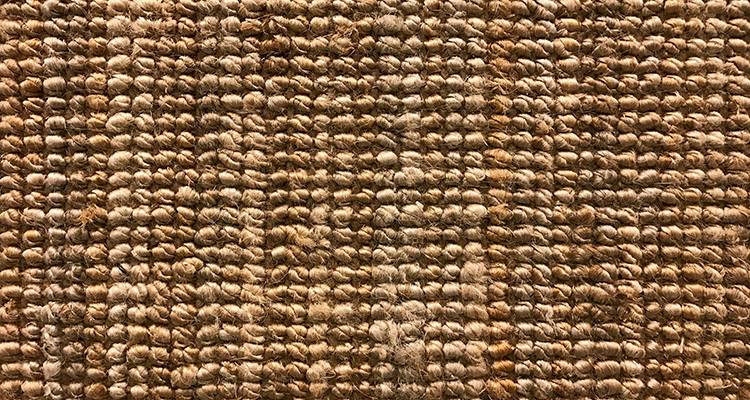
They are made using traditional loomed methods. This means they are labour intensive to make, but the finish is of high quality:
Axminster Carpet Cost
These carpets are made using a technique very similar to the one used to make oriental rugs. They are named after the machine that is used to create them.
They are renown for being grand and intricate. The average cost per m2 is £50 - £100 per m2.
Pros
- ✔ Ornate finish
- ✔ Luxury feel
Cons
- ✖ Very expensive
- ✖ Velvet finish will fade over time
Wilton Carpet Cost
These carpets are made using a loom and a continuous strand of yarn. The final feel of these carpets is smooth and velvety.
The average cost per m2 is £40 - £90 per m2.
Pros
- ✔ Wide range of patterns options
Cons
- ✖ Very Expensive
Tufted Carpet Costs
The majority of carpets in the UK are made using the tufted method. This involves using rows of needles to punch the pile through the backing material. As the material is pulled back through this creates a loop.
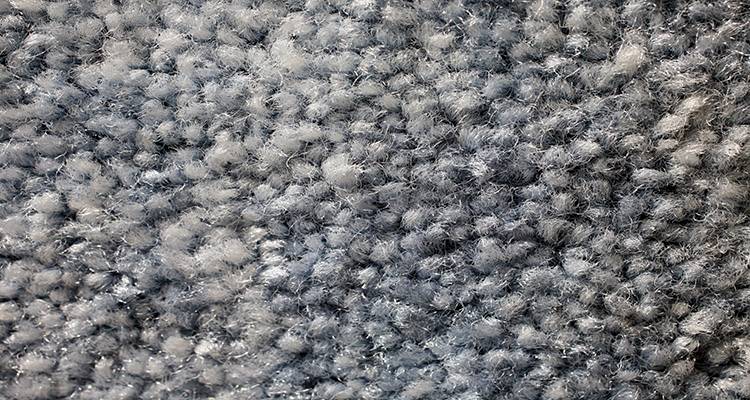
These loops can be shaped or cut to give different finishes. This method is much quicker and can be automated, so it is much cheaper:
Twist Carpet Cost
In a twist pile carpet, the cut tufts of fabric are twisted. This creates a durable and hard-wearing carpet. These can be made with two tones to create a 'heather' look which can hide the presence of dirt or animal hair.
These are a good choice for high traffic areas like hallways and stairs. The average cost per m2 is £4 - £50 per m2.
Pros
- ✔ Hard-wearing
- ✔ Can hide dirt well
Cons
- ✖ Can be hard to keep clean
Saxony Carpet Cost
Saxony carpets are made from very densely packed fibres. The fibres are cut to about an inch in length and stand straight up.
They are very soft but show wear and footprints easily. The average cost per m2 is £8 - £30 per m2.
Pros
- ✔ Extremely soft underfoot
- ✔ Luxurious finish
Cons
- ✖ Needs replacing more often
- ✖ Does not hide dirt
Velvet Carpet Cost
Velvet or plush carpets are cut quite short. The fibres have a slight twist to them. These carpets are best suited to low traffic spaces as they can show footprints easily.
The average cost per m2 is £20 - £50 per m2.
Pros
- ✔ Soft and even finish
- ✔ Look smart and formal
Cons
- ✖ Shows tracks from feet and vacuuming
Frieze and Shag Carpet Cost
Both Frieze and shag carpets are made in the same way. The only difference is the length of the fibres. The longest fibre options tend to be called Shag carpet. In both types, the threads are cut long.
The threads are a mix of thicknesses, and they all lie in different directions. It's a good choice for high traffic areas. The average cost per m2 is £20 - £50 per m2.
Pros
- ✔ Durable
- ✔ Luxurious feel underfoot
Cons
- ✖ Informal appearance
Berber Carpet Cost
When it comes to carpeting, the term Berber can be used in two ways. Some people may use Berber to refer to all types of loop carpets. However, it can also be used to describe a particular type of loop carpet.
These are carpets that are usually brown with a second fleck of colour in the fabric. The loops are short, which makes for a hard-wearing carpet. The average cost per m2 is £5 - £30 per m2.
Pros
- ✔ Pattern hides dirt well
- ✔ Hard-wearing
Cons
- ✖ Not suitable for pets or small children
- ✖ Firm feel underfoot
Level Loop Carpet Cost
Level loop is essentially the same as a Berber carpet. However, they come in any colour or design that you want.
The average cost per m2 is £5 - £30 per m2.
Pros
- ✔ Hard-wearing
- ✔ Choice of colours
Cons
- ✖ Not suitable for pets or small children
- ✖ Firm feel underfoot
Multi-Level Loop Carpet Cost
Here the finish is created by using loops of different heights. This can be used to create a pattern on the carpet as well as a textured feel. The average cost per m2 is £8 - £45 per m2.
Pros
- ✔ Hard-wearing
Cons
- ✖ Not suitable for pets or small children
- ✖ Firm feel underfoot
Flat Weave Carpet Cost
Flatweave carpets have a mixture of interlocking vertical and horizontal loops. This creates a very flat and firm feel underfoot.
They are ideal for use as stair runners. The average cost per m2 is £30 - £60 per m2.
Pros
- ✔ Durable
- ✔ Provide secure footing for stairs
Cons
- ✖ Firm underfoot
Level Cut and Loop Carpet Cost
In this style, the cut sections of the carpet are all at the same length as the loops. The average cost per m2 is £20 - £50 per m2.
Pros
- ✔ Patterns can make a space look larger
Cons
- ✖ Carpet may wear at different rates
Textured Cut and Loop Carpet Cost
Textured cut, and loop carpets have different heights for the cut and loop sections. This creates a different look and feel then with level cut and loop.
The average cost per m2 is £20 - £50 per m2.
Pros
- ✔ Patterns can make a space look larger
- ✔ Finish is more highly textured
Cons
- ✖ Carpet may wear at different rates
Carpet Material
Once you have chosen the type of carpet that you want, you then need to decide what material you want it to be made from.
Most materials can be used for most types of carpets:
Polypropylene (Olefin) Costs
This is one of the most common materials for carpets.
It's cheap to make and very durable. It is easy to clean and does not tend to produce static. The average cost per m2 is £3 - £50 per m2.
Pros
- ✔ Low cost and maintenance
- ✔ A cheap option
Cons
- ✖ The pile flattens more quickly than other options
Polyester (PET) Carpet Costs
Polyester is a more environmentally friendly alternative to polypropylene, and it has a very similar feel. It resists staining well but can wear out in high traffic areas.
The average cost per m2 is £30 per m2.
Pros
- ✔ Soft feel
- ✔ Stain-resistant
Cons
- ✖ Low durability
Wool Carpet Costs
Wool is a natural fibre. It does feel very soft and luxurious and is quite durable.
However, cleaning it requires specialist knowledge.
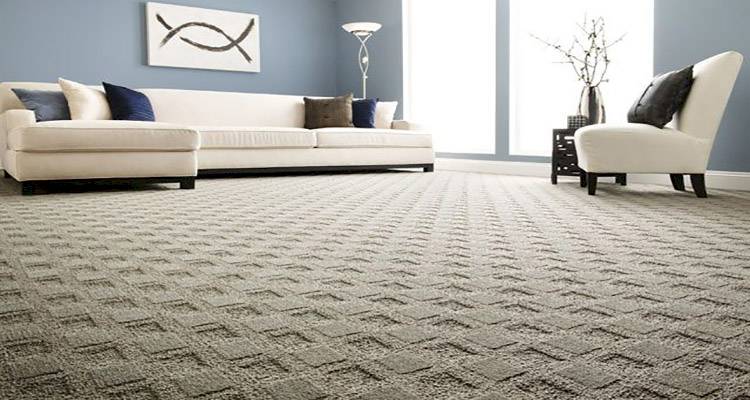
The average cost per m2 is £15 - £60 per m2.
Pros
- ✔ Soft and luxurious
- ✔ Strong
Cons
- ✖ Difficult to clean and maintain
Sisal Carpet Costs
Sisal is another natural material. It is very durable and hard-wearing. It's an environmentally friendly option that will last a long time. It is made from the fibres of the sisal plant.
The average cost per m2 is £45 per m2.
Pros
- ✔ Very hard-wearing
- ✔ Natural material
Cons
- ✖ Rough feel underfoot
- ✖ Require regular vacuuming
Nylon (Polyamide) Costs
Very popular choice.
Nylon is very long-lasting and easy to maintain. In term of price, it is a mid-range option and offers good value for money.
The average cost per m2 is £30 per m2.
Pros
- ✔ Long-lasting
- ✔ Easy to Clean
Cons
- ✖ Can produce more static when walked on
Alternatives to Carpet
Carpet is the traditional choice for many rooms, but it is not the only options.
There are several other options which can be more practical or aesthetically pleasing:
Laminate Flooring Cost
Laminate a very versatile option. It is quick and easy to fit and is quite durable.
It is easy to maintain and clean. The average cost is £5 - £15 per m2.
Pros
- ✔ Easy to install
- ✔ Durable
- ✔ Low maintenance
Cons
- ✖ Not suitable in wet areas
- ✖ Can get scratched
Wood Flooring Cost
Wood flooring is an attractive feature. It gives a real wow factor in a room. It can even increase the value of your home.
There are a lot of options to choose from. However, wood is an expensive choice. The average cost is £20 - £75 per m2.
Pros
- ✔ Long-lasting
- ✔ Durable
- ✔ Appealing and can increase home value
Cons
- ✖ Expensive option
Tile Flooring Cost
Tile floors are an excellent choice in kitchens and bathrooms. They can be made from a wide variety of materials, giving endless options for the final look.
A tile floor can last as long as the house, so it is a good investment. The average cost is £20 - £100 per m2.
Pros
- ✔ Long-lasting
- ✔ Many options to choose from
Cons
- ✖ Expensive option
Vinyl Flooring Cost
Vinyl can be laid either as a roll or as planks. It is a good all-purpose option that can come in a range of designs.
The average cost is £7 - £30 per m2.
Pros
- ✔ Easy to install
- ✔ Low maintenance
Cons
- ✖ Can look cheap
Carpet Underlay Prices
Underlay is an important part of your carpet.
The quality of underlay you use can have a large impact on the final feel of your carpet. It acts as a shock absorber quieting footsteps and softening your steps.
It provides insulation to keep heat in your home. When you are planning your budget for your carpet, make sure that the underlay isn't an afterthought. Getting higher quality underlay will help your carpet to last longer.
Do keep an eye on the tog rating; this is the measure of how effective it is as an insulator. If you have underfloor heating, you won't want tog rating of more than 2.5.
PU Foam
This a very popular choice for underlay. It gives a very soft feeling underfoot. It is made from recycled furniture foam, so it is an environmentally-friendly choice. The average cost is £3 per m2.
Pros
- ✔ Soft underfoot
- ✔ High insulating effect
- ✔ Environmentally friendly
Cons
- ✖ Flattens over time
- ✖ Susceptible to denting by heavy furniture
Crumb Rubber Underlay Cost
This underlay is made from recycled car tyres. It gives a firm feeling underfoot and is very supportive.
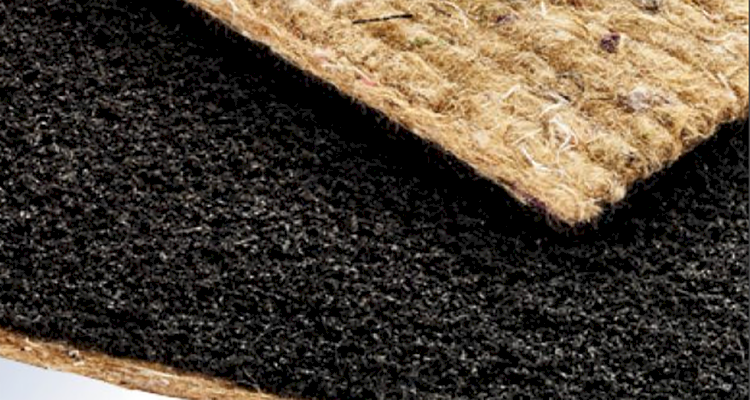
It can be a good choice for high traffic areas like stairs. The average cost is £5 per m2.
Pros
- ✔ Excellent soundproofing
- ✔ Resistant to denting by furniture
- ✔ Environmentally friendly
Cons
- ✖ Can feel hard underfoot
Sponge Rubber Underlay Cost
Sponge rubber can come in two forms — either waffle or flat. The waffle type has air pockets that will flatten out faster over time.
Waffle is better for low traffic areas, while flat performs well in high traffic areas. The average cost is £5 per m2.
Pros
- ✔ Soft underfoot
Cons
- ✖ Flattens over time
Felt Underlay Cost
Felt underlay is a very traditional choice. It works best with woven carpets. It has a high wool content, so it is a good insulator. The average cost is £4 per m2.
Pros
- ✔ High insulating effect
- ✔ Resistant to denting by furniture
Cons
✖ Feels firm underfoot
Combination
This underlay has both layers of crumb rubber and felt. It combines the features of both types of underlay to create a good quality option.
The average cost is £5 per m2.
Pros
- ✔ High insulating effect
- ✔ Excellent soundproofing
- ✔ Resistant to denting by furniture
Cons
- ✖ Feels firm underfoot
Cost of Carpet Cleaning and Maintenance
Staying on top of the regular cleaning and maintenance that your carpet needs can help it to last a lot longer. Here the key things to keep in mind in terms of cleaning and maintenance:
Everyday Cleaning
It's a good idea to vacuum your carpet regularly. This stops dirt from getting ground into the threads.
Once a week is a good amount.
If you have a cut pile carpet, a beater bar on your vacuum is a good idea. Loop carpets are better vacuumed without a beater bar.
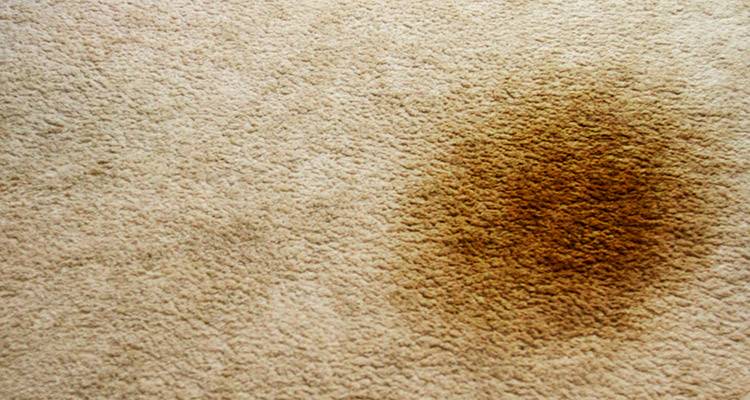
Furniture cups can prevent heavy furniture from leaving permanent indentations in the carpet and the underlay. Another way to prevent this is to regularly rotate your furniture a little to prevent it from wearing permanent marks into the carpet.
Try and avoid direct sunlight on sections of the carpet. It will cause the colour to fade in the places the sunshine falls.
If a fibre is standing out above the rest, you should trim it to the height of the rest. Don't pull it out. This can damage the backing of the carpet and cause more fibres to come loose.
Deep Cleaning/Steam Cleaning
It is a good idea to give your carpets a deep clean every 12 – 18 months. Steam cleaning is a good way to do this. Otherwise, you can use a carpet cleaner. It is a good idea to hire someone to do this for you.
Especially if you have a natural fibre carpet. If the carpet gets too wet, it can be damaged or develop mildew. It usually cost around £200 to get someone to clean your carpet thoroughly.
Dealing with Spills and Stains
If you spill something on your carpet or notice a stain, there are a few do's and don'ts to keep in mind:
- Do deal with the stain straight away.
- Don't rub the stain. This makes it worse.
- Do blot the stain with kitchen towel, and work from the outside in to prevent it from spreading.
- Don't apply cleaning products directly to the carpet; instead, put them on your cloth.
- Do completely dry out the carpet as quickly as possible.
Wool Carpets Care
Wool carpets require special care and maintenance. They can be vacuumed the same as other carpets, but any deep cleaning must be done with care.
It's very easy to permanently damage a wool carpet.
When you use a professional, you should take time to ensure they know how to deal with a wool carpet, as not all of them do.
Cost of Removing Carpet
It's quite easy to remove the old carpet:
- You simply need to pull it up. It's a good idea to start in a corner and work your way around the room from there. The carpet will only be attached at the edges of the room, so all you have to do it pull it away from the gripper rods.
- If you can't easily get started, you can try cutting a hole in the carpet at the corner and use this as a grip to get you started.
- Underneath the carpet is the underlay. This will have been stapled in place. You can easily pull it up, but it is a good idea to wear gloves when you do so to avoid injuries from the staples.
- Once you have the old carpet up, you, need to dispose of it. Most tips and recycling centres will accept it for free, but you will need to check yours. The other option is to pay for someone to take it away for you.
If you are getting a new carpet to replace the old one you can ask you, fitter, to take up and dispose of the old carpet. They will usually charge around £1 per m2 to take it up.
And around another £2-3 per m2 to take it away.
Some fitters just choose to charge a flat rate of £20 to dispose of your old carpet no matter how much there is.
Hiring Someone to Lay Carpet Checklist
Most carpet retailers will be able to recommend a carpet fitter that they regularly use. You don't have to use this fitter you can find your own. Here are a few key things to look for:
- Approved fitters. It is a good sign if your carpet fitter has been approved or endorsed by a trustworthy organisation. For example, the National Institute of Carpet and Floor layers (NICF). The associations don't guarantee the quality, but it is a positive indication of a tradesperson you can trust. There are also complaint resolution mechanisms within these organisations.
- Recommendations and reviews. Look for reviews and recommendations. The service other people have received is the best indication of what you can expect.
- Once you have decided on a carpet fitter, there are a few items you need to agree on. It's best to do this before work begins to prevent any problems later on.
- Where will the joins in the carpet be?
- Who will be responsible for moving the furniture?
- Who is responsible for removing and disposing of the old flooring?
- Will doors need to be adjusted; will they do that?
FAQs
What is the most durable type of carpet?
What is the best carpet cleaner?
It features a targeted spray nozzle for stubborn stains. It is an all-around cleaner with various controls and functions that can remove even the toughest of stains. Plus, it’s very lightweight, making cleaning the carpet a breeze.
What is the best carpet for stairs high traffic?
How do you measure stairs for carpet?
You will then need to multiply the measurement by the number of stairs you have. Once you have your figures, be sure to add some additional length and width just in case your measurements are wrong or in case some of the carpet becomes damaged during the fitting process.
How often should I clean my new carpet?
Sources
https://www.carpetright.co.uk/carpets/how-to-fit-carpet/
https://www.homestratosphere.com/carpet-types/
https://www.thespruce.com/overview-of-carpet-choices-1315092
https://www.goodhousekeeping.com/uk/product-reviews/a665115/which-are-the-best-carpets-to-buy-for-home/
https://www.loverenovate.co.uk/advice/best-carpet-underlay
https://www.diydoctor.org.uk/projects/carpet-underlay.htm









